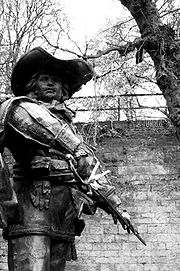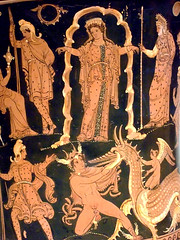
Dutch archaeologists believe that they have located the tomb of Louis XIV musketeer Charles de Batz de Castelmore d'Artagnan in a small Catholic church in the Netherlands.
According to a leading French historian, Charles de Batz de Castelmore dArtagnan, who served Louis XIV as captain of the Musketeers of the Guard, was buried a few kilometres away at Saint Peter and Paul Church in Wolder, Holland, The Times Online reports.
The trail is very precise, according to Odile Bordaz, author of several works on the musketeer.
She has marked down theories that d'Artagnans body was brought back to France, and has been insisting the Dutch authorities and the Catholic Church approve an archaeological dig of the site.
According to recently discovered documents, during the siege, bodies of French officers were buried in the nearest Catholic Church. D'Artagnan died during the Siege of Maastricht on June 25, 1673.
Alexandre Dumas wrote the novel The Three Musketeers in 1844 after reading about d'Artagnans exploits in Les Memoires de Monsieur d'Artagnan, which was published almost 150 years earlier.
Bordaz also said that d'Artagnan reputation as a lady killer was absolutely right
The musketeers and their officers led joyous lives and multiple conquests not only on the battlefield but also in the secret of the alcoves, she said.- From CathNews



 In a dusty cave in Israel,
In a dusty cave in Israel,  For the UCLA students, exploring the sprawling agricultural settlement that was Karanis and uncovering plant remains and animal bones from the fourth through sixth centuries is turning into the trip of a lifetime.
For the UCLA students, exploring the sprawling agricultural settlement that was Karanis and uncovering plant remains and animal bones from the fourth through sixth centuries is turning into the trip of a lifetime.
 The Phoenicians, enigmatic people from the eastern shores of the Mediterranean, stamped their mark on maritime history, and now research has revealed that they also left a lasting genetic imprint.
The Phoenicians, enigmatic people from the eastern shores of the Mediterranean, stamped their mark on maritime history, and now research has revealed that they also left a lasting genetic imprint. This article naturally caught my eye as I am currently listening to Conn Iggulden's first novel in his trilogy about Genghis Khan and have found it both thrilling and fascinating. It is historical fiction but hopefully Iggulden has not strayed too far from the facts. His incarnation of "Timujin" is a warrior of admirable strength and skill as well as a man of vision and deep conviction. Some may also perceive him as ruthless although I think he demonstrated more restraint than other men spawned in such an environment. The tribal society Iggulden depicts on the unforgiving steppes is that of a hard people struggling often just to survive in a land where the dispossesed or just unfortunate are prey to any passing group who simply want their meager belongings even if they are just an old worn dell (coat) and a small pouch of rancid mutton. But it was from these very wanderers that Genghis Khan forged a nation.
This article naturally caught my eye as I am currently listening to Conn Iggulden's first novel in his trilogy about Genghis Khan and have found it both thrilling and fascinating. It is historical fiction but hopefully Iggulden has not strayed too far from the facts. His incarnation of "Timujin" is a warrior of admirable strength and skill as well as a man of vision and deep conviction. Some may also perceive him as ruthless although I think he demonstrated more restraint than other men spawned in such an environment. The tribal society Iggulden depicts on the unforgiving steppes is that of a hard people struggling often just to survive in a land where the dispossesed or just unfortunate are prey to any passing group who simply want their meager belongings even if they are just an old worn dell (coat) and a small pouch of rancid mutton. But it was from these very wanderers that Genghis Khan forged a nation.